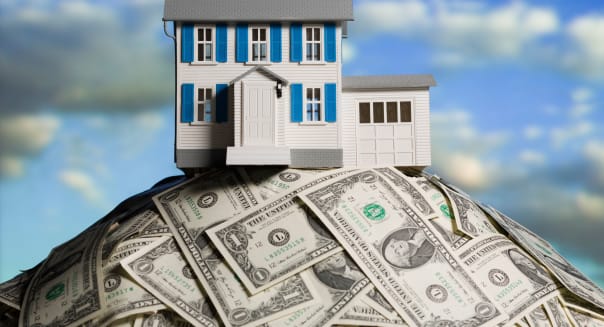Disaster Looms for Many With Home Equity Lines of Credit

If you have been reading the headlines lately, you will notice a lot of news about home equity lines of credit. On the one hand, we are fearing the looming crisis of resetting HELOCs. And, at the same time, banks are celebrating the rapid growth of this product. Are we losing our minds?
The Reset Crisis
Before the mortgage crisis in 2008, HELOCs were incredibly popular. If you had equity in your home, the bank would give you a line of credit. You could use that line of credit in multiple ways: you could write checks, transfer funds, or even use a debit card. The infamous debit card was the true signal of a world gone crazy: it was easy to finance your latte over 30 years.
Most HELOCs would have a “drawdown period.” During that time, you could use your line of credit almost like a credit card. The only difference is that you would typically only need to pay the interest due each month. So, for the first 10 years, the HELOC was an interest-only product. As competition heated up, some banks would even offer interest rates during the drawdown period below the pPrime interest rate. Savvy people used the ultra-cheap borrowing in clever ways. Unfortunately, many others used it as a way to finance their lifestyles, convinced they could afford it.
At the end of the 10-year draw-down period, the balance on the HELOC would then convert to a standard, amortizing term loan. Interest rates would be much higher than the rate charged during the drawdown period. So, not only would your payment convert from interest-only to amortizing, but the interest rate would go up as well. This could result in a huge payment shock.
But the promise of the banks to the customers was the ability to refinance. Brokers frequently told borrowers not to worry about the interest rate reset, because they would be able to refinance the loan and reduce the payment. In other words, the payment shock would never happen because home prices were always increasing, and banks were always lending. Until there weren’t.
Can They Pay $700 More a Month?
By now you have probably done the math, and realize that HELOC done at the peak of the lending bonanza (2005-07) are now going to reset. In 2015, according to RealtyTrak, 890,730 loans are going to reset, and the average payment increase will be $140 per month. However, the average is deceiving. I have spoken with a senior risk manager at a large bank, and he told me stories about payment shocks as high as $700 a month.
This is a huge risk for both the banks and the borrowers. Borrowers who cannot afford the new, higher payment will have to refinance. But here is the problem: 56 percent of the HELOCs are underwater, which means the balance of the mortgages is higher than the value of the home. They will not be able to refinance.
The next three years will see 3.3 million borrowers facing steep resets, with 1.8 million borrowers at a very high risk because they do not have the option of refinancing.
This product should have never existed. Revolving lines of credit to subprime borrowers, with interest-only draw-down periods followed by dramatic payment shocks make absolutely no sense. Hopefully the banking sector has learned its lessons.
And that leads me to the other bit of news.
HELOCs are Growing Rapidly
It looks like the old playbook has been revived. Experian Decision Analytics provides regular reporting on consumer credit trends, and it has identified HELOCs as an area of rapid and dramatic growth during 2014. For many years after the crisis, you couldn’t find a HELOC anywhere. Now it is hard to walk by a bank without seeing a HELOC advertisement in the window. Banks originated $37 billion of HELOCs in the last three months of 2014, up from just $20 billion in the last three months of 2011.
In fairness, the 95 percent of the originations to date have been to prime and super prime borrowers at loan-to-value ratios of 90 percent or less. However, it is only a matter of time before LTVs start increasing, credit standards start loosening and deep drawdown discount rates are on offer once again.
For many subprime borrowers, having access to their home equity makes a lot of sense. When the alternative for an emergency or a home repair is a high interest rate credit cards or bankruptcy, equity lending makes sense. But gimmicky lines of credit that are score-driven and liberal with cash flow underwriting should be banished forever.
I fear that just was we deal with the consequences of the last disaster, we are planting the seeds for the next one.
